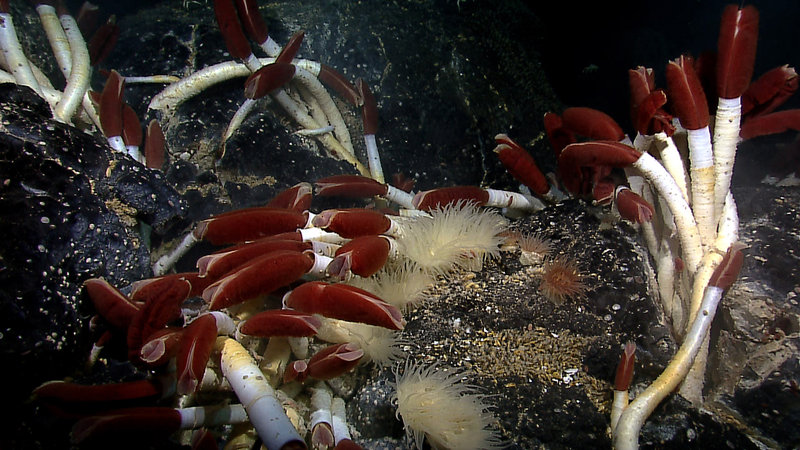July 14, 2020: Vent Field

Image courtesy of NOAA Office of Ocean Exploration and Research, Galápagos Rift Expedition 2011. Download larger version (jpg, 1.4 MB).
On July 24, 2011, during the Galápagos Rift Expedition 2011, the team discovered one of the largest vent fields known on the rift, measuring 120 meters by 40 meters (394 feet by 131 feet). The field, which the team dubbed “Tempus Fugit,” was characterized by diffuse venting in a once-massive clam bed thought to be more than 20 years old. In addition to mature live vesicomyid clams, siboglinid tubeworms, and mytilid mussels, the high abundance of juveniles suggests that this site has seen multiple colonization events over time.
This image is of one of the largest concentrations of Riftia tubeworms observed at the vent field, with anemones and mussels colonizing in close proximity.
From: Discovery of the “Tempus Fugit” Vent Field.